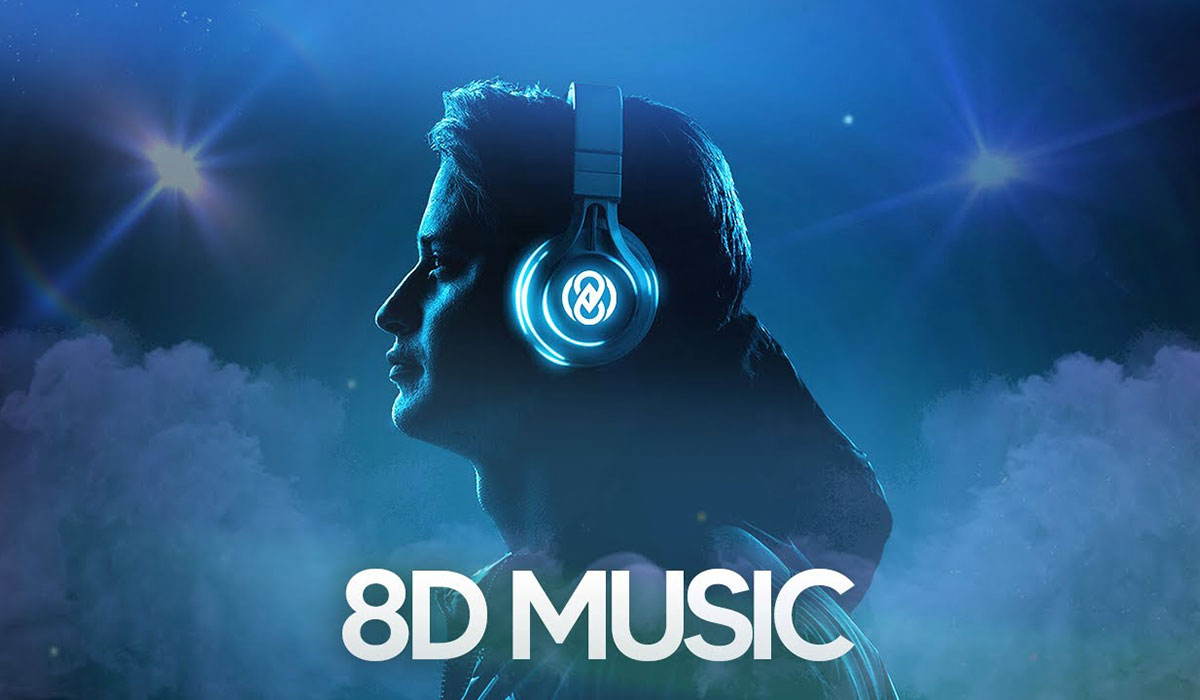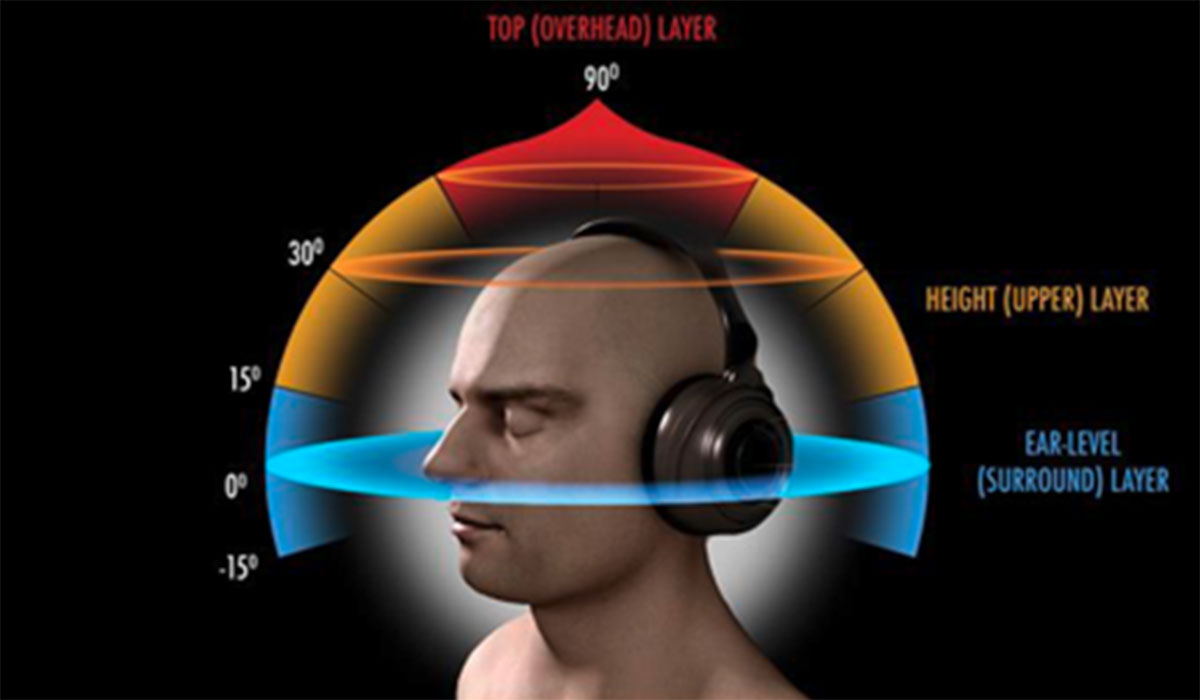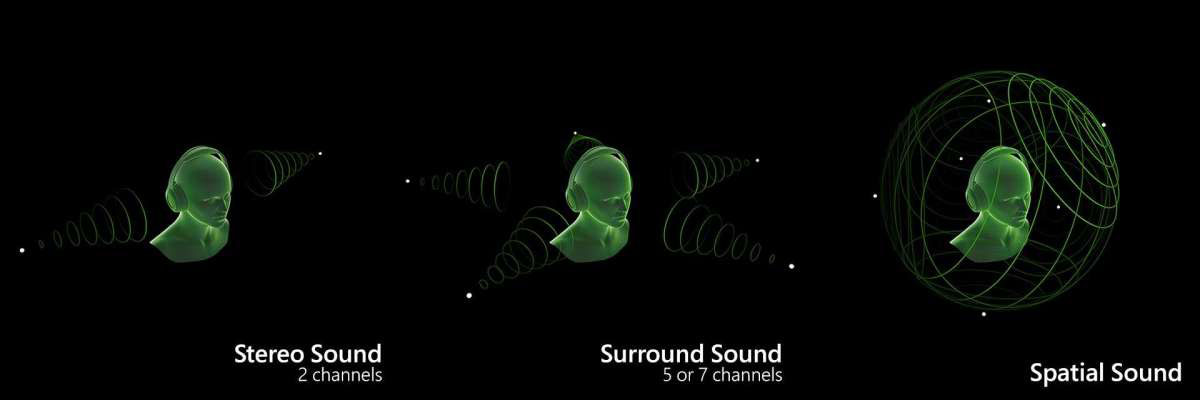What Is An 8-Dimensional Sound? Everything You Need To Know
In This Article, All The Information Needed To Better Understand 8-Dimensional Sound Is Mentioned, And The Existing Questions Are Answered.
8-Dimensional Sound, If you are one of those people who spends a lot of time in cyberspace, you have probably come across an option called 8D Audio. Next 8? In the sense of a sound that has eight dimensions?
Yes, there are now sounds that the makers claim to have eight dimensions; But how can sound have eight dimensions? Can the ear hear such a complex file at all? Also, why are we told to use headphones when watching 8D videos?
In this article, we will answer some of these questions and examine the 8-dimensional sound in general; If you would like to add information about this technology, be sure to read this article to the end.
How can sound have eight dimensions?
Let us clarify one thing at the beginning of the article: no matter what the YouTube videos claim, no audio has 8, 9, or 100 dimensions. In fact, the sound really has no dimensions.
Our brain is a mighty machine, But this organ can only interpret incoming sounds through the ear in three dimensions; The same three-dimensionality in which we live includes height, width, and depth. This makes us distinguish between the sounds that come from behind us and the sounds that are in front of us.

Let’s look a little further at how the human brain can do this; But for now, let’s say that “8-dimensional sound” really has no extra dimensions. In fact, it is a marketing term used to describe a particular type of audio recording that has nothing to do with advanced physics.
What is 8D sound?
The 8-dimensional sound uses the principles of binaural recording to deceive our brains, and the sounds are broadcast from different places in three-dimensional space. When an 8-dimensional song is used, it can give the impression that you are standing in the middle of a room (gym or concert hall); While all the musicians and singers move magically around you.
Hasn’t this been done before? The answer to this question is yes. If you are a fan of listening to music with headphones, you have probably come across many pieces (usually from the heyday of studio production in the 1970s) that have used the movement of sound in space to make them more attractive.
The difference is that this method is rarely used in professionally produced songs, and there is never a continuous sound effect in a movement.

8D sounds use this feature as an important feature of the effect. 8-dimensional songs are always moving in space.
The main idea behind producing such sounds is to calm the listener, But whether such sounds can be soothing to the listener is a matter for further discussion; Because different answers have been given to it. Thus, 8D sound can be considered ASMR.
If you do not know what ASMR is, we have to say that this is another YouTube audio phenomenon that its fans insist can help them relax or sleep better or have a fascinating audio experience in general; Of course, others find it horrible. Most of the time, you say the effect is pleasurable or soothing, or even scary.
Like any other art, various works are produced in this way, some of which are unique and catastrophic. At its best, 8-dimensional sound can create a new way to enjoy your favorite tunes; But listening to a voice that has not been able to use this technology well may cause dizziness and nausea.
Where can I find 8D audio?
YouTube is probably the easiest place to find 8D audio tracks. Just do a Google search for 8D audio, and you will come across a huge collection of 11 million that you do not need to buy a subscription to access. You can also find 8D versions of your favorite music on YouTube.
Shared music streaming servers like Apple Music and Spotify also have categories for eight-dimensional music getting bigger every day. These audio files are usually instrumental versions of popular songs or original music, But the maker must publish the effect of its 8-dimensional state. These kinds of music can also find on Iranian sites.
How does 8D sound work?
Our brain uses a few cues to understand where sounds are coming from. There is disagreement as to how long it takes for a sound to reach our ears. The sound produced on our right enters the right side of the auditory system shortly before it reaches the left ear. This is a great indicator of the location of the sound.
Then there is the reflection and resonance of sound when thrown from objects. Finally, the issue of filtering should mention; How the true quality of sound changes from ear to ear. Something as simple as the shape of our head can affect the sound we hear.
Our sense of visual depth uses similar types of cues to function, the largest of which is the difference between the versions of the world that each of our eyes sees; So if you can manipulate the signals that each ear receives, you may be fooling the brain into thinking that the sound it hears comes from a specific point in space.
The binaural voice does just that; But to separate what each ear hears, you need to use headphones.
Leaving aside the new idea of 8-dimensional sound, the science of binaural sound has been around for more than a hundred years.

Bilingual analog recording is done by physically moving a sound source around a set of microphones that simulate the human ear to produce the final effect.
However, thanks to 3D audio software tools, you can do the same thing digitally on your computer without the need for a special studio or microphone.
New technology for creating 8-dimensional sounds could explain the sudden increase in the number of such works on YouTube. In fact, it can be easy to produce 8-dimensional sound if you have access to the right software.
The effect of biceps on health
Binaural Beats are essentially the same as 8-dimensional sound. What is interesting about this type of sound is its positive effects on the listener’s health. It is said that the biceps can activate the mental state associated with mindful meditation much faster. For the brain to detect and respond to it, the frequencies must be less than 1000 Hz.
For example, if the left ear receives a 200 Hz sound; While the transmission frequency for the right ear is 210 Hz, the double ear beats are 10 Hz. It is so easy to calculate.
Adherents of biceps usually recommend treating anxiety and stress and other related disorders; So, if you are stressed, this method may help you.
The reality of space sound
Dolby Atmos is an advanced version of 8D audio that Dolby produces and uses audio objects instead of audio channels. With this technology, sound moves in a three-dimensional space around you; So, you feel like you’re moving.
As a result, we return to the question: Is there an 8-dimensional sound? There are two answers to this question: Yes, because with this method, different sounds can hear around you in the space of 360 degrees; 2. No, because this is not a new technology, and 8D audio is definitely not the right name for it, But it can be more accurately called Spatial Sound or 3D Audio.

Why do we need headphones to listen to 8D sound?
A pair of headphones may look like a miniature set of stereo speakers on either side of our head. Still, there is an important difference that determines their superiority over the speaker in this situation.
The sound never reaches the other ear from headphones in one ear. In addition, with a pair of speakers, both ears can hear almost all broadcast sounds, Which is known as a Crosstalk.
Crosstalk prevents the brain from decoding the exact location of sounds; For this reason, we have 5.1, 7.1, and even 5.2.1 surround sound speaker systems.
The only way to create a deep realistic feeling with a speaker is to physically place them in front of the listener, side, back, and top, and then carefully control which speaker sounds are emitted from.
What about 9, 16, 24, 48, or even 100-dimensional sounds?
After listening to many of these songs on YouTube, we can say no real difference between them. They all perform certain basic tricks to move musical elements in the simulated three-dimensional space. Some of them only move the vocal part of the music, But others step further and make each instrument move uniquely.
Will 8D sound be a huge feature?
Although the 8-dimensional sound is a fun use of ancient ideas, it does not seem to have much place in the world of music. The sound it produces does not work without headphones, and the constant movement of sounds can be tedious.
Then comes the issue of legality. Of all the 8-dimensional pieces we found on YouTube, the original artist has officially confirmed almost none.
Unless the original creator has approved these 8-dimensional songs, you should not be surprised by the sudden removal of pieces from cyberspace.

However, space sound or 3D music, such as Dolby Atmos and Sony 360 Reality Audio, are still in their infancy; Therefore, it is possible that in the future, it will become an experience that music fans are looking for.
These formats have advanced technology and some degree.
Producers and musicians produce these songs in the studio and distribute them on various music streaming services such as Spotify or Pandora Radio.
You can listen to these formats using headphones and home theater systems with surround sound and even single 3D speakers like Amazon Echo Studio.
It should also note that prominent musicians and producers have not produced all the 8-dimensional music that you can listen to. Most of the music you watch on YouTube contains well-known songs that unknown or independent editors and producers have edited without the original artist’s permission.
last word
If you listen to 8-dimensional music, you will quickly notice the difference between them and regular versions. This sound effect creates an immersive listening experience. Different sounds enter your ear and create a complex state that is enjoyable to experience.
As the name implies, the 8-dimensional sound covers all angles available when producing music and allows you to hear different sounds from several different directions separately and simultaneously.
Of course, you have to find out if 8D sound is right for you. The good news is that to do this, and you need headphones and patience to find the right piece on the Internet.
What do you think about 8-dimensional sound? Did you feel good after listening to these songs, or was it not attractive to you?













